Time was when we were happy with a wee morsel of chocolate on opening the daily door of an Advent calendar. But life changes, and the mad men get smarter.
So we have the advent of the luxury Advent calendar, a handsomely packaged box with miniature versions of lots of bits of things you like, usually at a vastly inflated premium per unit to cover fancy packaging.
In 2017 we can buy Advent calendars filled with high-end cosmetics or miniature bottles of bubbly, and people have been known to queue for hours to spend hundreds on a calendar filled with mini-beauty products.
£10,000
Possibly one of the most expensive Advent calendars around is of rare Scotch - the Very Old and Rare Whisky Advent Calendar (drinksbythedram.com). It has 24 different, handmade 30ml wax-sealed drams of the “most spectacular whiskeys ever created” from all over the world, including a 60-year-old single malt Scotch, rare Japanese expressions, single casks, sought-after limited editions, complex Speyside expressions.
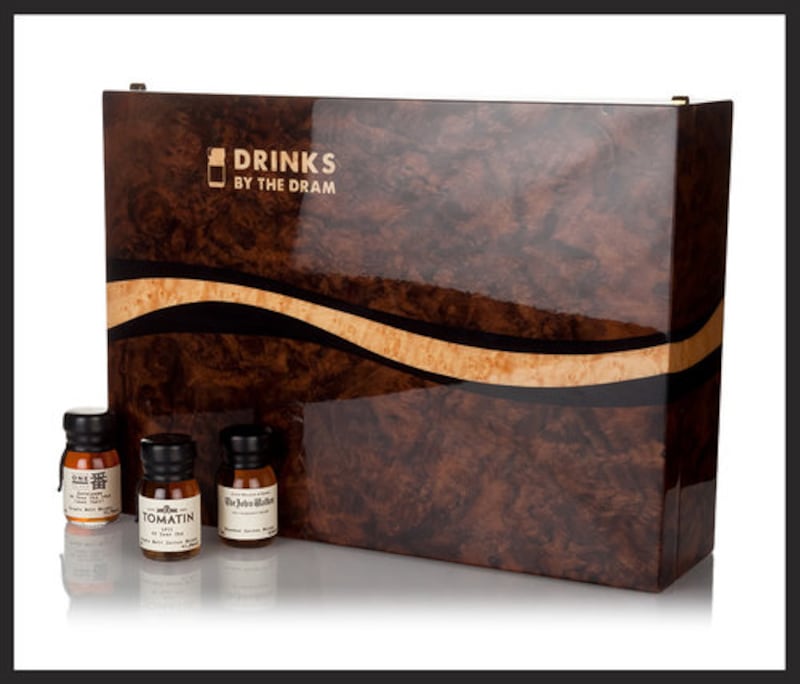
It costs €10,000. Sterling. Or, to be exact, £9,999.95 (more than €11,000).
The same company has other Advent calendars at slightly less jaw-dropping pricetags, including the Old and Rare Whisky Advent Calendar for £1,000 (still the most expensive Advent calendar on Amazon), plus a bunch of other scotches, cognac, Armagnac, tequila and rum calendars.
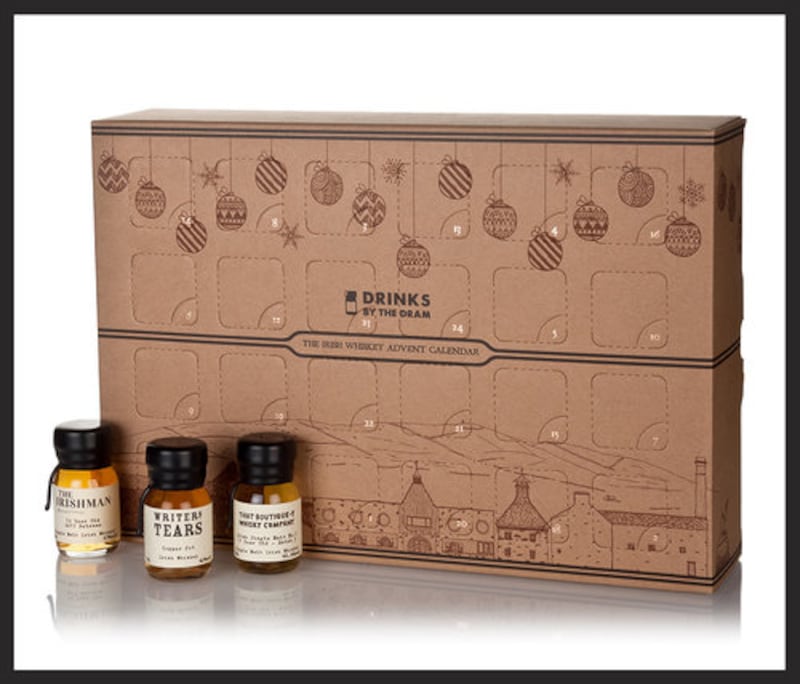
A wee dram usually applies to Scotch so it sounds somehow unsettling to talk about a "dram" of Irish. This year's Drinks by the Dram Irish Whiskey Advent Calendar has 24 miniatures of some of Ireland's finest whiskeys – "a tasty surprise from the Emerald Isle every day in the run up to Christmas!" – from single malts and grains to world-renowned blends and a single cask. It's €172.17 from Mastersofmalt. com, or £150 direct from drinksbythedram.
Lots of other boozy Advent calendars for adults feature in the luxury December gift ranges, promising a daily softening of reality during this time of hibernation and of parties.
There’s a sparkling wine Advent calendar (thepipstop.co.uk for €136, or £125), containing 24 baby bottles of 200ml of prosecco, cava, pinot noir and rosé, with a mini Champagne behind door 24.
Among a bunch of gin Advent calendars, the Ginvent (£125 from ginkiosk.com) promises a carefully curated selection from London Dry to Old Tom, to Navy strength or fruit-infused, which “provide a snapshot of the category’s depth, diversity and global reach”.
My other calendar’s a Porsche
For those who can’t decide between a booze calendar and a chocolate one, Hotel Chocolat has one with both – truffles, pralines, chocolate wreaths, chocolate snowflakes, Santas, slabs and luxury hot chocolate, along with 5ml bottles of cocoa gin and salted caramel vodka (Grand Chocolate Advent Calendar, £68).
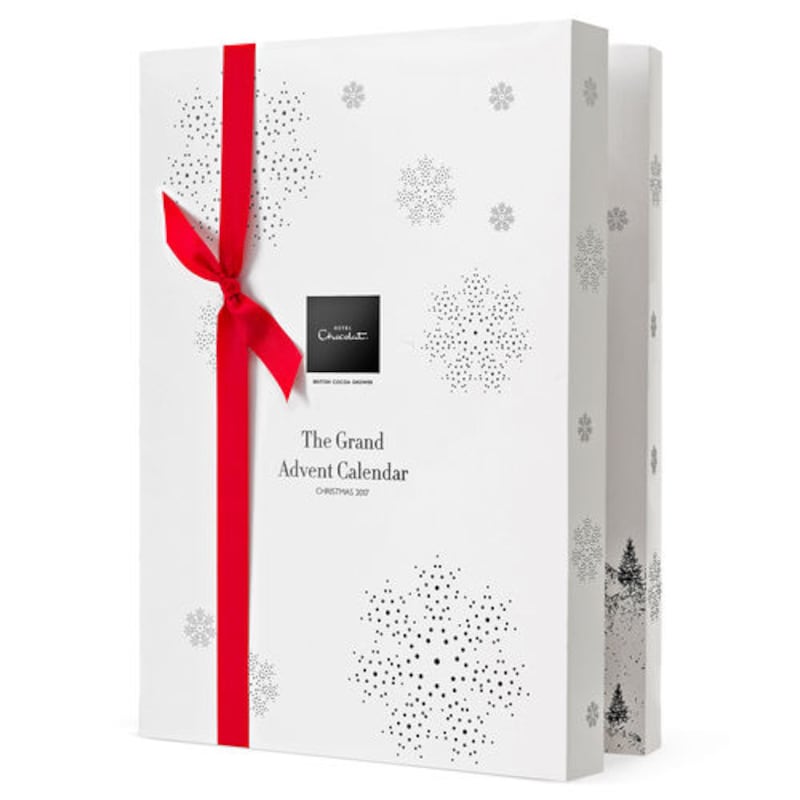
Seeing that Advent calendars originated in Germany, it's fitting that Aldi has had a wide range, from a Nutcracker Advent Calendar and White House Advent Calendar (€15 each), and a wine Advent calendar: 24 mini bottles of red, white and rosé from France, and bubbly from Italy and Spain (€70, for the same volume of wine as six regular bottles).
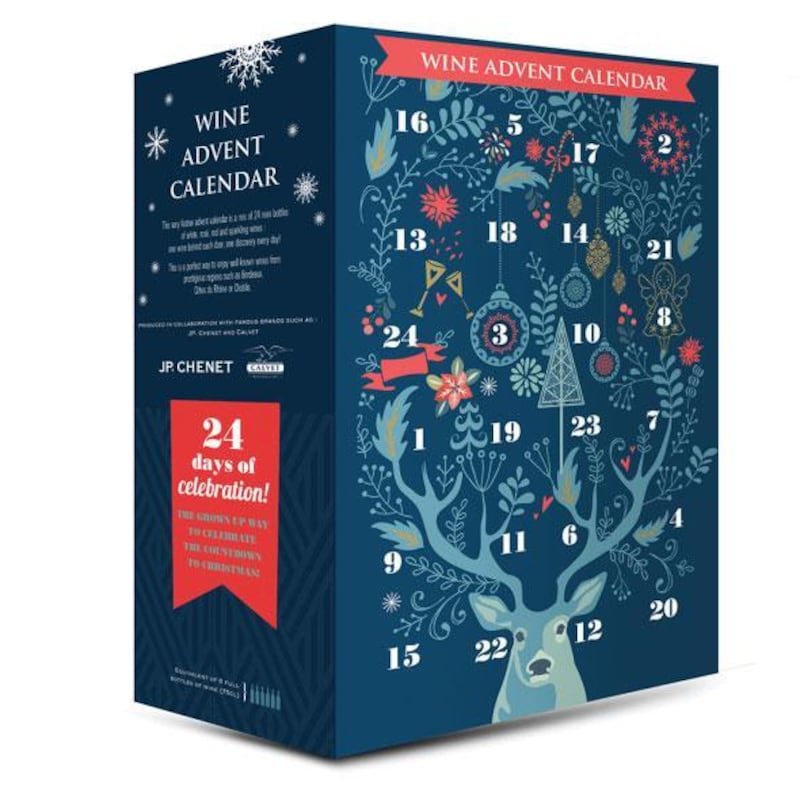
If you think some of those whiskeys are pricey for a December frippery, consider who might have been in the market for the Porsche Advent calendar, which displayed in Harrods in 2010. There were only five worldwide of the $1 million calendar, one for each continent.
The “calendar” included a Porsche Design Indicator Chronograph watch in rose gold, a designer kitchen, an 8.5 metre speedboat, a pair of gold sunglasses and cufflinks.
At quite the other end of the market are the ever-popular Lego calendars, available in Penneys, and a Marvel-themed chocolate one from Dealz for €1.50.
At the other end, as you might expect, Brown Thomas does a good line in luxury Advent calendars. It stocks the Fortnum & Mason wooden tea Advent calendar, with traditional teapots printed on the front and 24 small numbered doors concealing different types of tea. It’s €160 for 210g of tea and the wooden display case.

If that sounds too spendy, Pukka does a great fold-out Christmas tea calendar with 24 different organic teabags. It smells divine and is €8 online or in health food stores.
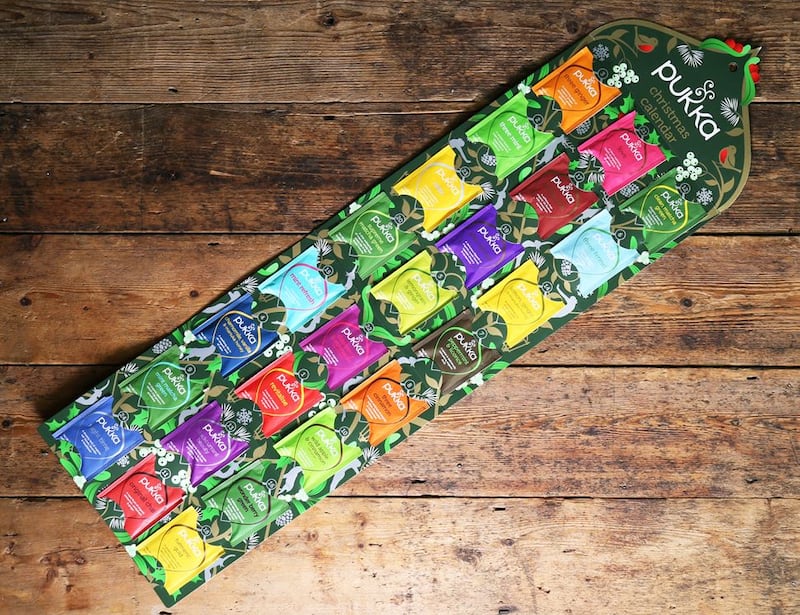
Beauty calendars
Beauty Advent gifts is where the luxury hits the high notes. Some might consider they’re a bit like a bunch of cosmetic samples in fancy wrapping, but they are a big seller, and sometimes offer good value.
At the top of the price pile is the Charlotte Tilbury Naughty & Nice Advent calendar (€185 in Brown Thomas), one of those which cheekily reinvents 24-day Advent as the 12 days of Christmas, so there are just a dozen trinkets to open, but they are more generously sized samples.
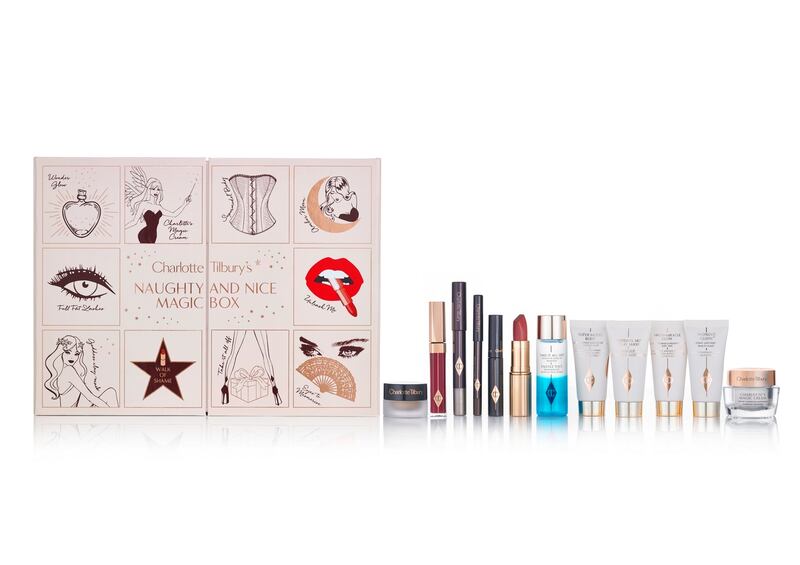
This one promises naughtily named makeup, including Take It All Off (eye makeup remover), Matte Revolution Walk of Shame (lipstick) and Unleash Me (Lip Lustre lip gloss) – in a case that doubles as a jewellery box afterwards.
Shops from BT to Boots also have beauty calendars from Clarins (Christmas in Two Cities, which doesn't include flights, for €120), Lancome (€120-€130), Rituals (€60), Bare Minerals (€87), Yankee Candle (€33) or Laura Ashley (€50) Soap and Glory (€50).
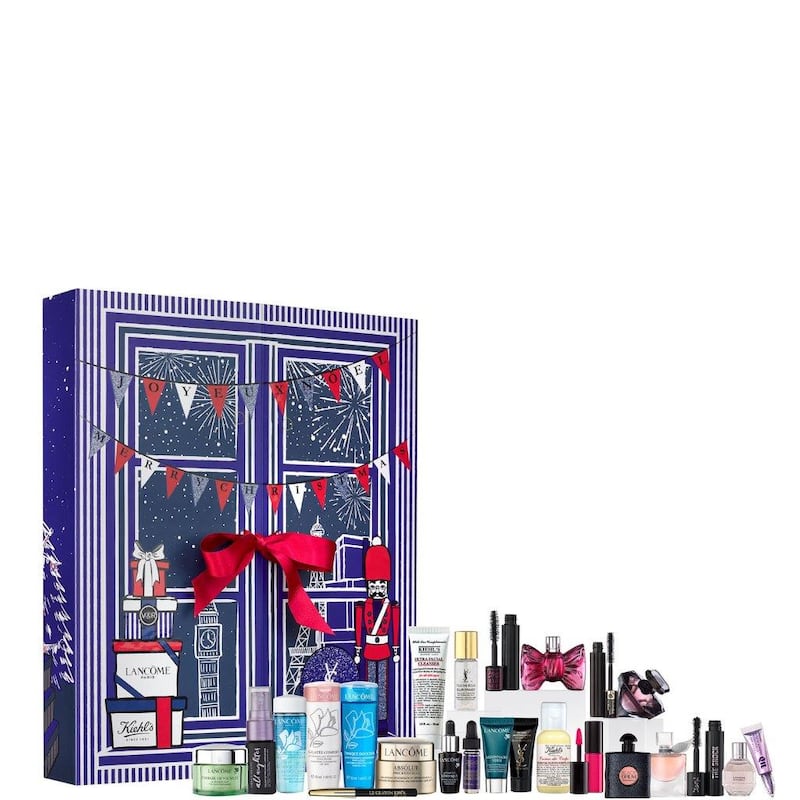
Following a mini-cosmetic storm of outrage, beauty vlogger Zoella’s 12-day version of Advent was slashed at Boots from €65 to €32.50. The YouTube star was criticised by parents pestered into buying the cash-in, which featured 12 cheap gifts including a bauble, stickers and a pen.

On the other hand the Liberty beauty Advent calendar was touted as “incredible value” (it went on sale for £175, but claims to have products worth £500). People queued for hours to get one of the 10,000 calendars in October; it sold out online in a day-and-a-half, and in shops within three days.
Nazi calendar
It's all a way away from the cardboard Advent calendars, which probably originated in 19th-century Germany, where families marked off the days until Christmas Eve, or hung up small pictures at home. The first printed calendars were made in Germany at the turn of the 20th century, with one manufacturer, Gerhard Lang, inspired by the calendar his mother made him as a child.
By the 1930s, cardboard was rationed and his company closed. The Nazis produced their own Advent “calendar” – a pamphlet with pages to be turned each day, with images including swastikas and Russian tanks being blown up.
After the war, Germany's Advent calendars returned to more traditional themes. In his living room, Richard Sellmer created a calendar based on a German winter town scene, and in 1946 he was printing them at his newly founded company in Stuttgart. In the 1950s, they became more mass-produced and affordable, and Sellmer's calendars were exported to the US, sold for charity and promoted by President Dwight Eisenhower.
The company, which is now run by Sellmer’s grandsons, Oliver and Frank, still makes traditional Advent calendars (although they also sell ones filled with chocolates). “We lived directly over the company, so my brother and I were around Advent calendars the whole year,” says Oliver, who started working for the company for pocket money after school.
Its most popular Advent calendar is still the first Sellmer made, Little Town.
How does he feel about the avalanche of luxury or novelty calendars? The longevity and tradition of his company will see them through, he says. “The Advent calendar is, and always will be, a German tradition. All those other ones are very expensive and would never be competitors to our products.”
Additional reporting: Guardian



















